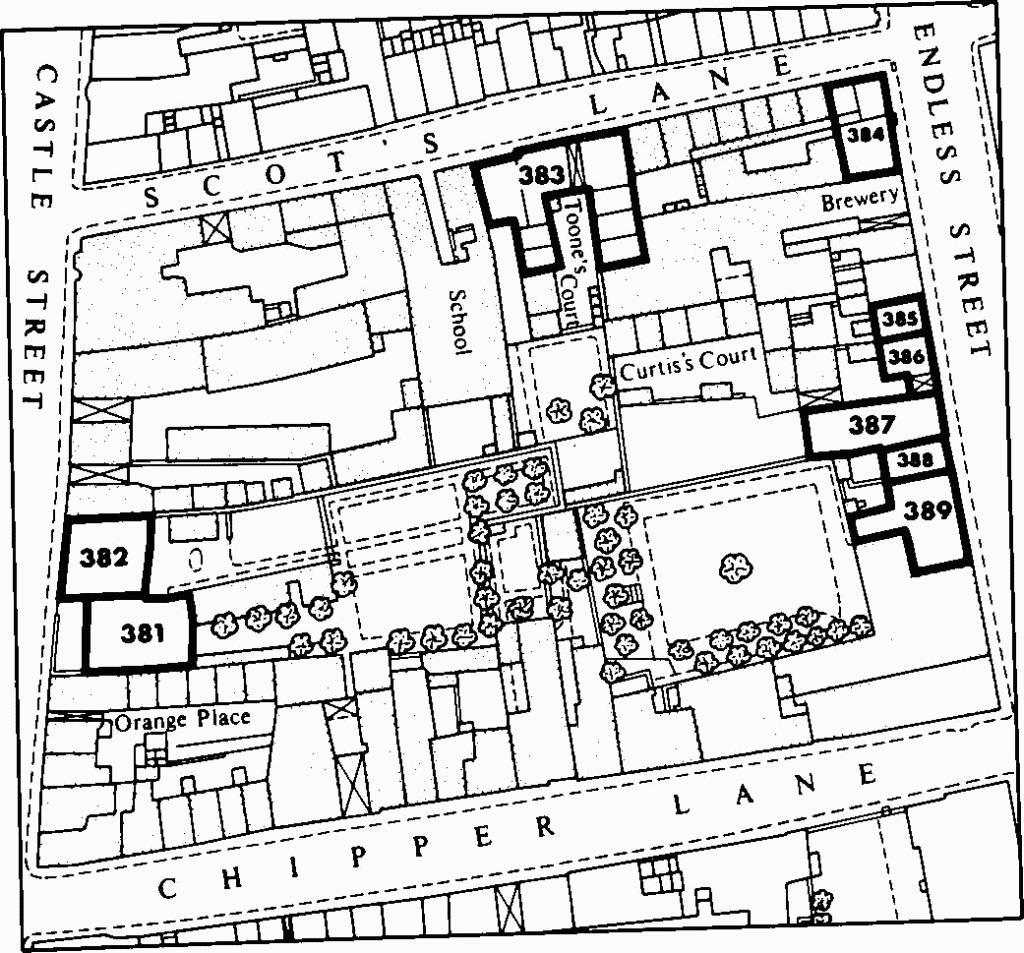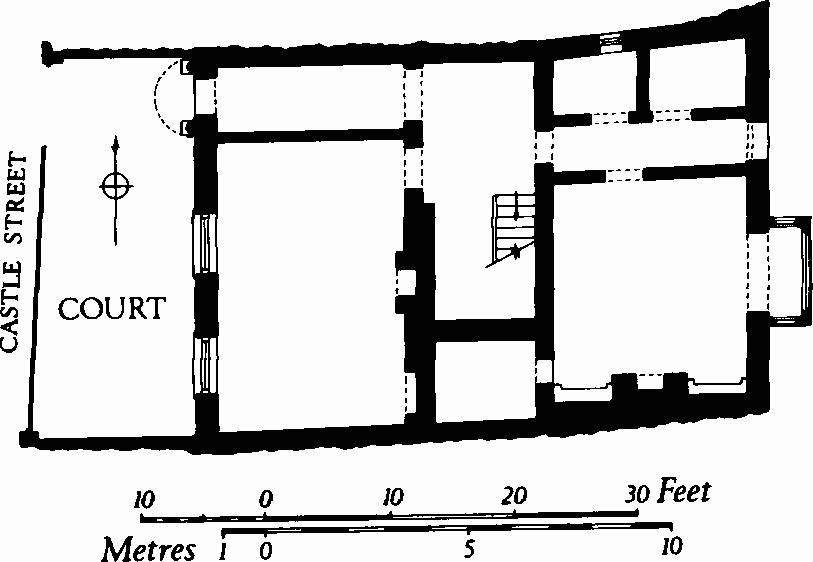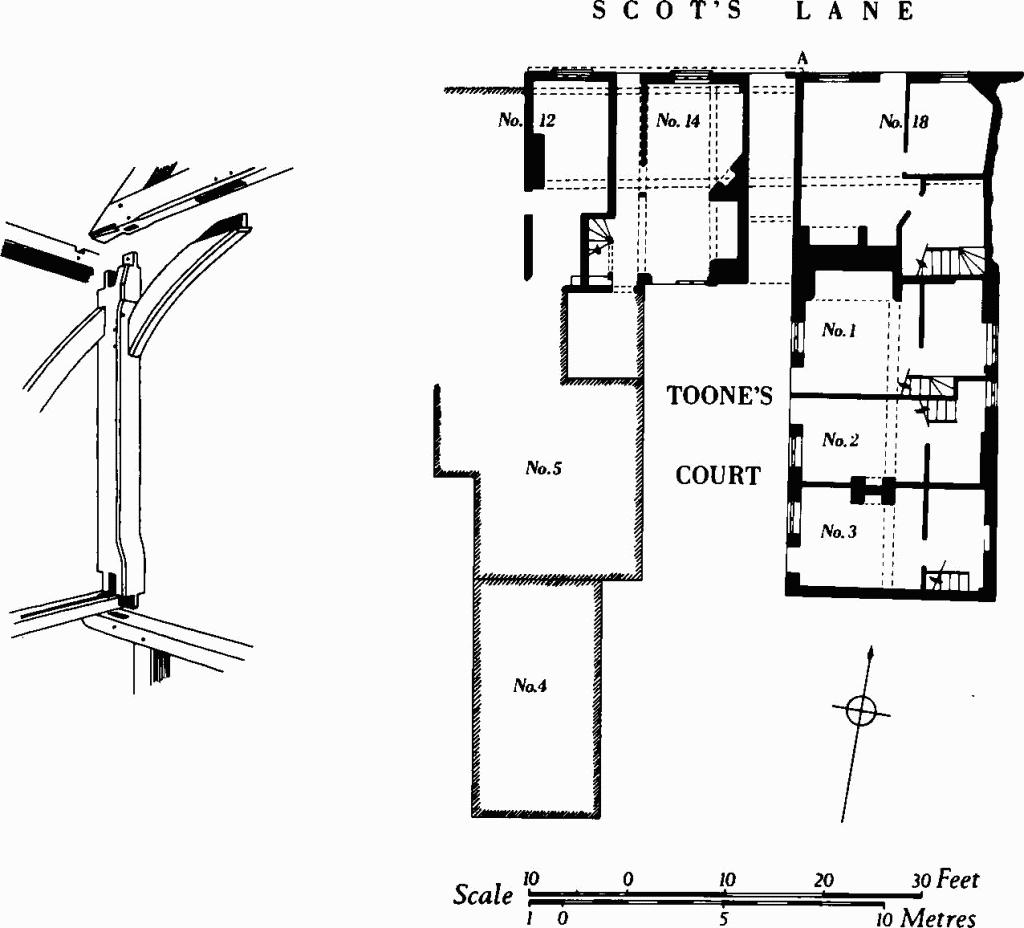Ancient and Historical Monuments in the City of Salisbury. Originally published by Her Majesty's Stationery Office, London, 1977.
This free content was digitised by double rekeying. All rights reserved.
'White Horse Chequer ', in Ancient and Historical Monuments in the City of Salisbury(London, 1977), British History Online https://prod.british-history.ac.uk/rchme/salisbury/pp141-144 [accessed 27 April 2025].
'White Horse Chequer ', in Ancient and Historical Monuments in the City of Salisbury(London, 1977), British History Online, accessed April 27, 2025, https://prod.british-history.ac.uk/rchme/salisbury/pp141-144.
"White Horse Chequer ". Ancient and Historical Monuments in the City of Salisbury. (London, 1977), British History Online. Web. 27 April 2025. https://prod.british-history.ac.uk/rchme/salisbury/pp141-144.
White Horse Chequer

Monuments in White Horse Chequer.

(381) No. 26 Castle Street
Ground floor.
(381) House, No. 26 Castle Street, of three storeys with brick walls and slate-covered roofs, was built early in the 19th century; the Rate Books indicate occupation from 1808. The three-bay W. front is separated from the road by a narrow forecourt defined by original iron railings; scrolled ironwork over the gate is modern. The round-headed doorway has a semicircular flat hood supported on Tuscan columns (Plate 99). Inside, the stairs have mahogany handrails and plain iron uprights. The main rooms have plasterwork and joinery, often with reeded decoration.
A plan of 1849 by J.M. Peniston (fn. 1) shows a service range and a garden to E., and other buildings flanking a courtyard which extended S. to Chipper Lane. Old photographs are preserved. (fn. 2).
(382) Hotel, of three storeys with brick walls and slate-covered roofs, was built c. 1850. The three-bay W. front has plain sashed windows.
(383) Toone's Court, a group of 16th-century buildings recently demolished, comprised Nos. 12, 14 and 18 Scot's Lane together with five small tenements flanking a court on the S. (Plate 65). The buildings were of one and two storeys and had timber-framed walls, partly rendered and partly hung with mathematical tiles; in places 18th-century brickwork replaced the timber framework. The roofs were tiled. The W. part of No. 12 was of the 19th century; the E. part was contained in the westernmost bay of a 16th-century two-storeyed range of five bays, jettied N. at the first floor, but with the jetty partly under-built in the lower storey. No. 14 comprised the second and third bays of the 16th-century range, but in the lower storey a through-passage giving access to the court occupied part of the third bay. The fourth and fifth bays of the range, constituting No. 18, had been refronted in brickwork in the 18th century, but part of the original framework remained inside. At right-angles to the street range, on the E. side of the court, a 16th-century range containing three cottages (Nos. 1–3) had originally been a single-storeyed building, probably a workshop. In the 18th or 19th century it was converted into cottages by inserting partitions, the S. chimney-stack, the upper floor and the staircases; in the roof, two original tie-beams were cut away and their ends were stiffened by sling-braces. Nos. 4 and 5, on the W. side of the court, had been largely rebuilt in the 19th century, but they retained elements of original timber framework. Timbers in the roof of No. 12 suggested that the roof of Nos. 4 and 5 formerly extended northwards to a gable on the street front.

(383) Toone's Court.
Inside, the open fireplace in No. 14 had a reused stone lintel, moulded underneath and probably taken from a 15th-century fireplace. The masonry of the chimneybreast incorporated a number of carved stones brought from elsewhere (probably Old Sarum), with 12th-century chevron decoration etc.; some of the stones had originally been voussoirs. A small 12th-century capital with volutes was reset at the S.W. corner of the through-passage. Reset in the lower part of the stairs of No. 14 was a 16th-century doorway with a chamfered ogee lintel. The large open fireplace in No. 1 had chamfered stone jambs and a chamfered oak bressummer; it was evidently a feature of the original single-storeyed range, serving the presumed workshop.
The roof of Nos. 12, 14 and 18 had collared tie-beam trusses with king-struts and lower angle-struts. The tiebeams were tenoned and braced to the jowl-headed posts and dovetailed into the wall-plates (see sketch).
(384) House, No. 37 Endless Street, of three storeys with brick walls and a tiled roof, was built during the first half of the 18th century. The E. front has a 19th-century shop window on the ground floor and five bays of plain sashed windows in the two upper storeys. Inside, the pinewood stairs have open strings, turned balusters and moulded handrails.
(385) House and Shop, No. 29, of three storeys with brick walls and a slated roof, is of c. 1850. In 1977 a 15th-century timber-framed wall came to light between this house and No. 27 (386).
(386) House, No. 27, of three storeys with brick walls and a slated roof, is of c. 1830. Incorporated with the two-bay E. front, an elliptical-headed archway formerly gave access to Curtis's Court, demolished c. 1965. Further S., the facade of No. 27 covers part of the E. front of the adjacent house (387), including its doorway.
(387) House, No. 23, of two storeys and an attic, has brick and tile-hung walls and slate-covered roofs. Of early 17th-century origin it retains a six-bay roof of that period. Inside, plasterwork and joinery are of the mid 18th century.
(388) House, No. 21, of two storeys and an attic, with walls of brick, rubble and flint and with tiled roofs, is of the late 17th century.
(389) House, No. 19, of three storeys with brick walls and a slated roof, was built c. 1800. The E. front is of three bays with plain sashed windows in each storey; in the N. bay of the lower storey is a round-headed doorway with a pedimented hood. Inside, the stairs have a mahogany handrail, turned newels and plain balusters.
Photographs of No. 17 Endless Street, a substantial 18th-century house which formerly occupied the S.E. corner of the chequer, are in the Lovibond Collection (Nos. 71–85).